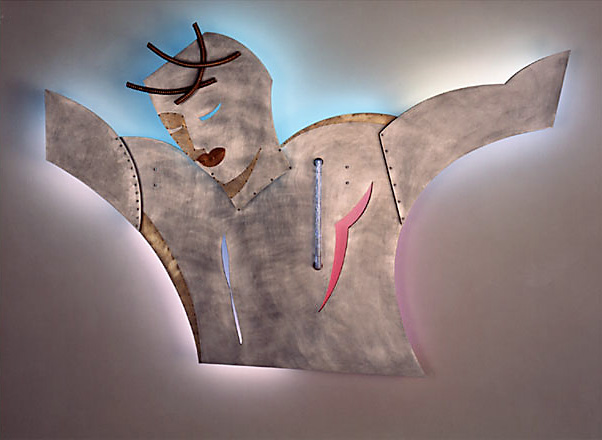One
of the most ethereal and spiritual of the artist’s metal and neon portraits
is Requiem which Lakich considers to be a portrait
of her longtime companion, Mary Carter. When the Touko Museum purchased the
work in 1988, she created another version as a gift for Mary, who had been
instrumental in curating the artist’s traveling exhibition and installing
it in Tokyo and five U.S. museums.
The halo of light around the form comes from phosphor tubes of various
colors attached to the back of the sculpture. A single crackle tube frequently
appears on work after 1983. (The bits of glass tubing contained in the larger
tube do not conduct electricity which finds a random path around them to produce
the crackling effect.) Shards of phosphor tubes in Requiem’s krypton
crackle glow blue, lavender and mauve, echo the colors of the back glow.
The crown of thorns is made of copper tubing—the kind that connects
a water heater to the gas line.
REQUIEM,
1988
Aluminum, copper, brass, glass
tubing with argon and neon gases
56 x 84 x 14 in (142 x 213 x 36 cm)
Collection: Touko Museum of Contemporary Art, Tokyo, Japan
"When
I finished cutting Elvis out of sheets of honeycomb aluminum in 1985 there were
scraps of metal left over which looked like a crucifix. Several times I wanted
to use the pieces for other projects, but the image of a crucifix persisted;
I couldn’t bring myself to use the metal for anything else. During the
two years that I worked on Requiem, I thought of Michelangelo saying that the
sculptor is merely the vehicle for releasing the form which resides within the
block of marble.”


